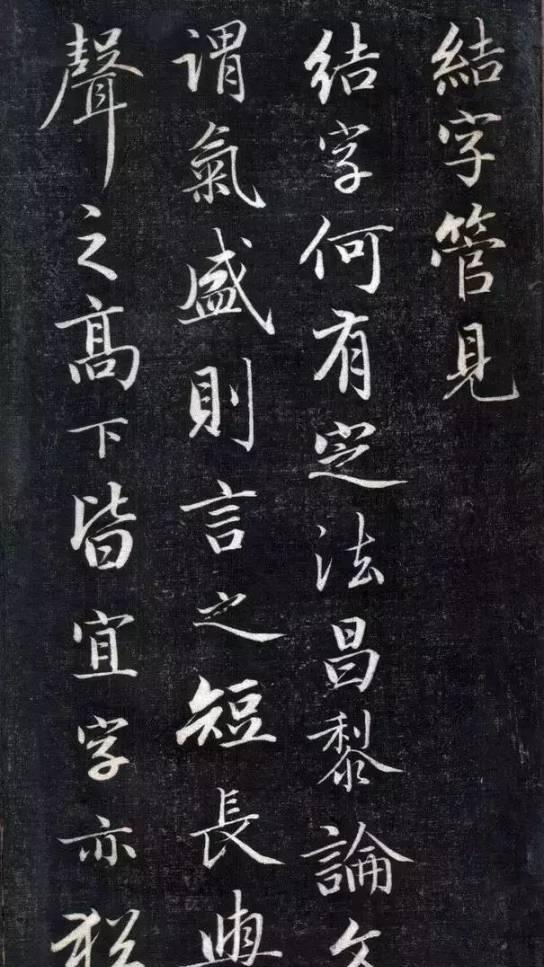Prince Cheng, Ai Xin Jueluo Yongyao (1752-1823), the eleventh son of Qianlong and the elder brother of the Jiaqing Emperor, loved the art of calligraphy since childhood, coupled with unique conditions, he had to peek into the collection of the Inner House, and the self-collection was very rich, and the title of the book was very important. Yong Yao Kai studied Zhao Mengfu and Ouyang Qing, Xiao Kai went in and out of the Jin and Tang Dynasties, and his calligraphy was handsome with a pen, the knot body was loose, and the style was elegant.
Yong yao xing cursive writing is also longitudinal and profound, quite stylish. He was involved in various families and worked concurrently with Liu Yong, Weng Fanggang, and Tie Bao, and was known as the four major scribes of the middle Qing Dynasty. The Ninth Year of Jiaqing's edict said: "Prince Cheng, a brother of the Emperor, has specialized in calligraphy since childhood, and he has been deeply inspired by the ancients' pen. Involved in various families, part-time work in various bodies, decades of linchi, the recent courtier writing of the book, rarely out of the right. ”

The evaluation of his calligraphy is that of Yang Han's "Miscellaneous Works of Xi Ke": "Wang de peeped into the inner mansion, and the self-collection was very rich, so the calligraphy was prepared, and most of them asked for help from the post, and did not delve into the ancient stele ear." The (Qing) Prince Zhao's "Miscellaneous Records of the Xiaoting Pavilion" said: "Yong Yao held a pen when he was young, that is, Bo Zhen Chengwen, a young worker Zhao Wenmin, and also tasted the internal prison of Kangxi. When Yan Qishi was young, he saw Dong Wenmin with a pen. However, before the three fingers held the pipe and hung the wrist book, the king popularized his words and used the method of dialing the lamp. ”
He also said, "When Yong Yao's name was important for a while, the scholar and doctor got a piece of paper with only a few words, and it was as heavy as a treasure." Commentators say that the kingdom is only one person under Wang Ruolin (Shu). The "Miscellaneous Works of Xi Ke" is also said: "The Book of The Curse of Jin Dynasty has never been investigated, but it is known that it traces the Ouyang rate from Zhao Cheng's will, although it occasionally involves various families, it will never depart from the purpose of the two families." The collection of volumes is mixed up at will, and there is even a complete town, which is not like the penmanship of the family. Seals and subordinates also have laws, cover books are not temporary, not one family, not very careful, and the spirit is sent, one by one, this unintentional is better than intentional. ”
Yong Yao was proficient in calligraphy, good at weaving, and subordination, and once wrote the Yuling Sacred Divine Meritorious Monument, the "Stirrup Method", and discussed the method of writing books with hanging wrists. Rich in books, because the family has the original manuscript of Qianlong Zhilu Ji "Pingfu Ti" (originally collected by The Empress Dowager Chongqing, the mother of Qianlong), it was named "Yi Jin Zhai", and there are also "Kanyun Pavilion" and "Listening to the Rain House", which contain many old engraved secret books of the Song and Yuan Dynasties, and the calligraphy and paintings of the Song and Yuan Dynasties are the crown of the moment. During the Jiaqing period, Prince Cheng carved the ancient calligraphy of Jin Luji, Tang Huaisu, Song Mifu, Huang Tingjian and other famous artists with their ancient inscriptions, and those who entered the posters took the authentic handwriting. For example, Huang Tingjian's book "Jing Fu Bo Shrine", this volume has "Seal of Yong Yao", "Seal of The Emperor Of Jin Zhai", "Imperial Prince Cheng Prince Of The Book Seal of Jin Zhai", and Prince Cheng carved it into volume IV of the "Book Of the Book of the Emperor Cheng".
The graphics and text originate from the Network, if there is infringement, please contact to delete!